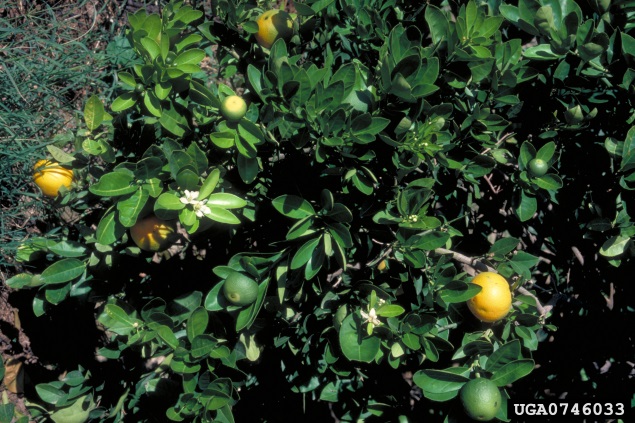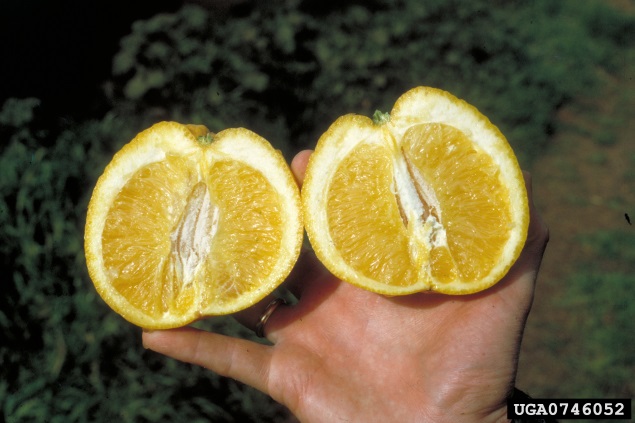
Stubborn
| Primefact number | Edition | Published | Author |
|---|---|---|---|
| 1357 | Second | Feb 2019 | Plant Biosecurity and Product Integrity |


Stubborn (Sprioplasma citri) is an exotic plant pest. This disease is a serious threat to Australia’s citrus industry.
Stubborn is caused by the bacterium Sprioplasma citri and can be both graft-transmissible and vectored by leafhoppers. Stubborn does not kill trees but stunts growth and inhibits fruit production.
Stubborn is a plant disease of citrus and is not harmful to people or animals.
Notifiable status
Stubborn (Sprioplasma citri) is a notifiable plant disease in NSW.
All notifiable plant pests and diseases must be reported within 1 working day. You can report notifiable plant pests and diseases by one of the following methods:
- Call the Exotic Plant Pest Hotline 1800 084 881
- Email biosecurity@dpi.nsw.gov.au with a clear photo and your contact details
- Complete an online form
A full list of notifiable plant pests and diseases can be found in Schedule 2 of the NSW Biosecurity Act 2015.
Description
The name ‘stubborn’ arises because the original characteristics of an infected citrus tree persist even after it is top-worked with healthy budwood because the bacterium moves between the scion and the rootstock. Affected trees are stunted.
Leaves from infected trees are shorter and broader, cupped, abnormally upright and sometimes mottled or chlorotic.
Shoots may be abnormally bunched and develop multiple axillary buds which give rise to witches’ brooms. Infected trees may flower out of season and fruit at all stages of development may be present on the tree (Figure 1).
Fruit from infected trees may be small, lopsided or acorn shaped, with thick rind at the base and thin rind at the tip (Figure 2).
Colour inversion may be evident. Seeds may be partially aborted. Juice may have an insipid or bitter flavour.
Damage
Stubborn does not kill a citrus tree, but stunts its growth and lowers fruit production and quality.
Spread
Spriroplasma citri is vectored by leafhoppers. None of the known leafhopper vectors are present in Australia.
Spriroplasma citri is also spread by grafting infected plant material to healthy citrus trees.
Known vectors
In the citrus growing regions of California and Arizona the known leafhopper vectors of Spiroplasma citri are Circulifer tenellus (beet leafhopper) and Scaphytopius nitridus.
In the Mediterranean region the known leafhopper vector is Circulifer haematoceps (syn. Neoaliturus haematoceps).
Distribution
Stubborn is present in the citrus growing areas of California and Arizona in the USA.
Stubborn is present in the Mediterranean region, Middle East and North Africa.
Actions to minimise risks
Put in place biosecurity best practice actions to prevent entry, establishment and spread of pests and diseases:
- practice “Come clean, Go clean”
- ensure all staff and visitors are instructed in and adhere to your business management hygiene requirements
- source propagation material of a known high health status from reputable suppliers
- monitor your plants and fruit regularly
- keep records

